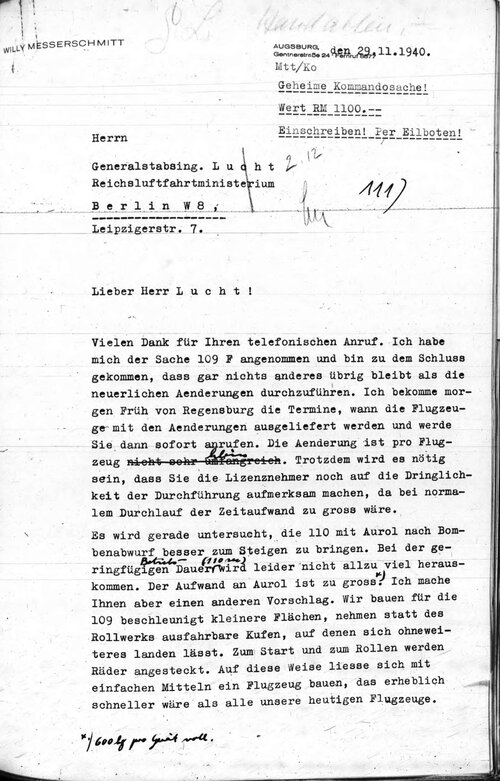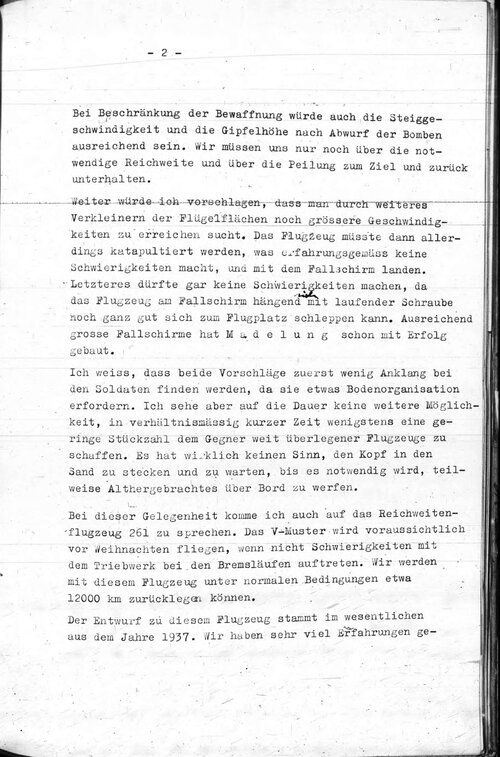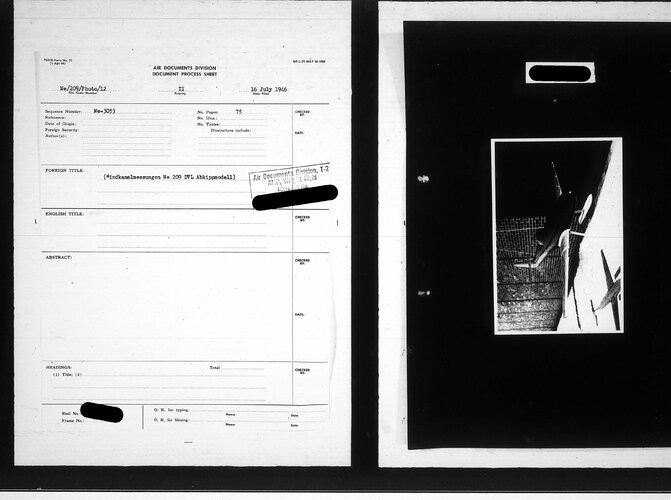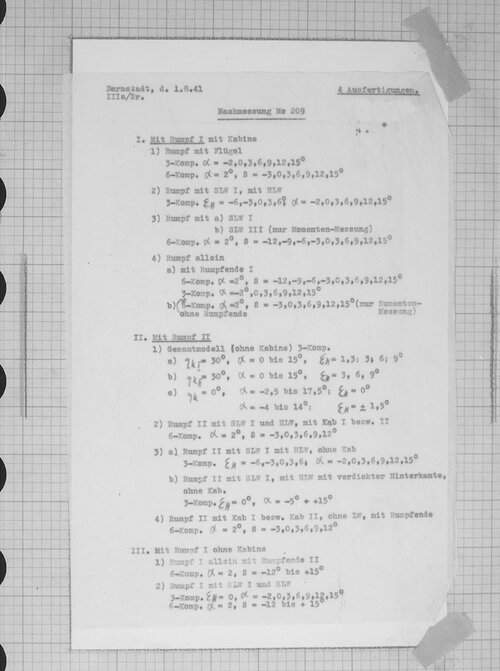- Joined
- 11 June 2014
- Messages
- 1,463
- Reaction score
- 2,449
Looking at this letter from Willy Messerschmitt to Roluf Lucht, dated November 29, 1940, it appears as though he's saying plans have been drawn up to give the Bf 109 'stick on' undercarriage wheels for take-off but skids for landing (or is he talking about the Bf 110?). And does anyone know what 'Aurol' is? I'm not entirely sure I understand what he's saying about very small wings/catapult take-off/parachute landing either! Am I reading this wrong?










